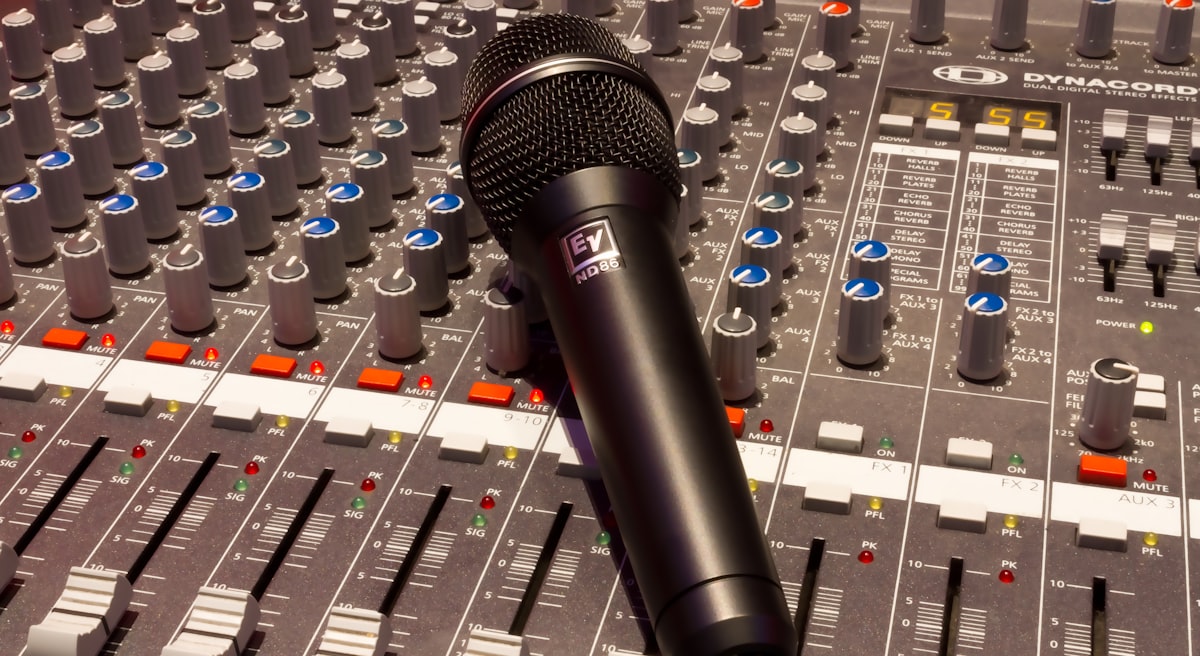Using Autotune During a Live Performance - How it Works

Autotune is becoming more and more popular among singers and is commonly used in recordings. However, watching a singer live and hearing the same autotune effect can leave you wondering how they do it when the live vocals are being altered instantly. This article will help you understand the technology to take some of the mystery out of autotune.
When singing live, autotune is applied to the voice signal going into the microphone before it is sent to the speakers. Autotune compares the singer's pitch to a selection of pre-programmed notes from the song's key signature. Any off-pitch notes will then be rounded to the nearest note in that key.
You can read more about how autotune works below, including what it is used for and how the voice is manipulated to create different autotune effects. In case you're considering autotune, I have also included some benefits and disadvantages you should consider.
How Does Autotune Work Live?
Autotune is the manipulation of a singer's pitch through a microphone. This can be done live or after a voice recording. If you are using autotune on a recording, the vocals are usually recorded naturally first (without autotune). This vocal track is then manipulated using the recording software to correct the singer's pitch.
During a live performance, this occurs almost instantaneously. Like any other voice effect, autotune kicks in between when the microphone picks up the singer's voice and when that voice is played through speakers or headphones. I will explain this process in more detail further down.
The Purpose of Autotune
The main purpose of autotune is to help singers to reach the right note during a performance. Most professional singers are able to pitch correctly, but it can be hard staying perfect all the time. This is particularly hard when they're run-down or have been touring for extended periods of time.
Having the correct pitch is particularly important for harmonising in vocal groups. However, some believe that using autotune takes away from the authenticity of watching a singer or vocal group live. The magic is in the vocalist's ability to sing well under the pressure. For this reason, autotune is a controversial tool among singers.
Another use for autotune is the deliberate alteration of the singer's voice to achieve an almost robotic sound. This is using autotune in a way that is so obvious that it because a signature style. Many modern singers use autotune in this way, such as T-Pain and Kanye West.
Who Controls Autotune?
Autotune can be turned on and off by either the singer or someone at the sound desk. If a singer wants control over their own autotune, they usually have a foot pedal that allows them to change the microphone effects.
However, more often than not, the sound technician will control autotune from the sound desk. This is usually switched on while the singer is performing and off while they are talking to the audience.
Programming Which Pitch is Correct
One of the biggest questions is how autotune knows which pitch to use. This is where pre-programming comes into play. Autotune will be programmed to the same key as the song being performed so that the software knows which notes the singer should be singing.
In other words, the autotune program is given a selection of notes to choose from and will then correct the singer's pitch to the nearest note in that selection.
This means you still have to be close to hitting the correct note, otherwise autotune will tune your voice incorrectly. For example, if you tried to reach a high note but were singing too flat, the autotune might correct your voice to the note below (check out my article here on how to reach high notes accurately).
This is one of the reasons why some artists may require a vocal track in their ears (in-ear monitors) to help pitch their voice as close to the correct note as possible.
The actual process of changing the pitch of your voice relates to the frequency of the sound waves being produced. High-frequency sound waves equate to a higher pitch/note, and low-frequency sound waves are the lower notes.
If you sing the wrong pitch (a little bit higher or lower than you should be), autotune will increase or decrease the frequency of the sound wave to correct the pitch. Sound waves are always converted into a digital signal through a microphone anyway as it is sent to the speakers, so altering the signal or sound wave along the way is easy to do.
Altering the Timing of Autotune
One more element that can be manipulated in autotune is how quickly the correction takes place. The quicker autotune corrects your voice, the more robotic the sound will be. For a more natural sound, you will need to choose a slightly delayed correction.
Having a delayed correction is more natural because this is what we do normally when hitting the wrong note. The singer will hear that they haven't pitched their note correctly and will instantly try to correct it with a subtle change in pitch. This reaction time is similar to a small delay in autotune.
Is Autotune Good or Bad?
Autotune has only been around since 1997, so singers have been getting by without it for a very long time. But then again, it was created to fill a need, so it has to be good for something. Below are the advantages and disadvantages that you should consider before entering the autotune revolution.
Advantages of Autotune
- Makes pitching notes accurate in the music
- Makes harmonising easier
- Less tiring for the voice because you don't have to hit every note perfectly
- Can create a unique sound effect in the song
Disadvantages of Autotune
- Encourages 'lazy' singing because you don't have to work as hard to hit a note
- Encourages bad vocal technique
- Pressure to continue using autotune because fans are used to that sound
- Makes it harder to sing naturally because you are used to the ease of autotune
- Removes the unique natural tone of your voice
- Sounds bad and damages your reputation if the technology fails mid-song
I personally am not a fan of autotune, but I can certainly see its benefits and unique use in certain styles of music. When considering artists such as Bruno Mars, Pink, Beyonce, Celine Dion, Alicia Keys, Shawn Mendes, Kelly Clarkson (and more) don't use autotune, it makes you wonder if that is one of the reasons they are so successful.
People admire raw talent and hard work. If you let them see that you can sing well in a live performance, they will not only appreciate the sound of your voice or the song that you sing, but also the fact that you can sing so well under the pressure of a live audience.
